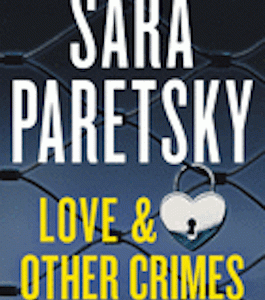Otto Penzler ranks, analyzes, & celebrates the 106 greatest crime films of all-time. Catch up on the series and find new installments daily here.
__________________________________
Psycho (1960)
__________________________________
TYPE OF FILM: Suspense
STUDIO: Paramount
PRODUCER: Alfred Hitchcock
DIRECTOR: Alfred Hitchcock
SCREENWRITER: Joseph Stefano
SOURCE: Psycho, novel by Robert Bloch
RUNNING TIME: 109 minutes
PRINCIPAL PLAYERS:
Anthony Perkins………………..……………………………………………………Norman Bates
Janet Leigh……………………………………………………………………………Marion Crane
Vera Miles……………………………………………………………………………….Lila Crane
John Gavin……………………………………………………………………….……Sam Loomis
Martin Balsam…………………………………………………………………….………Arbogast
John McIntire………………………………………………………………………….Al Chambers
Simon Oakland………………………………………………………………………….psychiatrist
John Anderson…………………………………………………………………“California Charlie”
Lurene Tuttle……………………………………………………………………….Mrs. Chambers
Frank Albertson…………………………………………………………………………….Cassidy
Pat Hitchcock………………………………………………………………………….…..Caroline
__________________________________
DID YOU KNOW?
__________________________________
Perhaps the most famous scene in cinematic history, the violent shower murder—which has been analyzed, written about, imitated, parodied, and remained in viewers’ memories five decades after it was made—barely involved the film’s principals. Janet Leigh, whose naked body is attacked by the killer’s huge knife, was actually used only for her hands and face, the rest of her body being replaced by a nude model. Anthony Perkins, the psychopathic schizophrenic, was in New York, preparing for a play, and another actor was dressed up in his costume and makeup. Even the director, Alfred Hitchcock, had turned over the meticulous laying out of the scene, virtually frame by frame, to Saul Bass, the art director who designed the titles (as he also did for Vertigo and North by Northwest). Hitchcock himself added only two shots: the knife actually entering the abdomen, and the blood mixing with the water as it is washed down the drain. Apart from that, the storyboard created by Bass was followed precisely.
__________________________________
THE STORY
__________________________________

THE STORY: Marion Crane meets her lover, recently divorced Sam Loomis, in a hotel room for a liaison on her lunch hour. Wanting to be married to Sam, who is unable to afford it, she steals $40,000 from her real estate firm when her employer asks her to deposit the cash, taking off in her car instead. That night, she stops at a run-down motel and chats with Norman Bates, the friendly owner, who tells her that he lives in the nearby house with his aged and apparently demanding mother.
As Marion undresses for a shower, Bates watches her through a small hole in the wall. While in the shower, she suddenly sees a shadow and is viciously attacked and killed by an old woman wielding a huge knife. Bates, apparently irritated at his mother for the violent act, nonetheless cleans up the bathroom, puts Marion in the trunk of her car, and sinks it in a nearby swamp.
Sam, aided by Marion’s sister, Lila, sets out to find the missing girl, as does an insurance detective, Arbogast, who is intent on retrieving the stolen money. The detective traces Marion to the Bates Hotel and becomes suspicious when Bates is caught in lies and refuses to let him see his mother. He telephones Lila and Sam to inform them of his progress and sneaks back to the house to try and question the old woman. Just as he reaches the top of the stairs, he is attacked by the knife-wielding old woman, his already dead body toppling back down the stairs.
Lila and Sam talk to the local sheriff and learn that, in fact, Bates’s mother has been dead for ten years. They go to the house, and Lila is attacked but escapes serious harm. In the fight that ensues, it is revealed that Norman is a schizophrenic, a friendly young man who becomes a violent maniac when he takes on his mother’s personality.
***
Psycho was a tremendously influential film that, for all its brilliance, caused a terrible decline in horror and suspense films as less-talented writers and directors now felt free to show more and more graphic screen violence. Slasher films, little known until then, have since become a staple of summer cinema, and the entire notion of subtlety appears to have died with Hitchcock.
Of all the successes enjoyed by Hitchcock, this was by far the most financially rewarding. Made for a preposterously little $800,000, it earned Hitchcock a check for $2,000,000 within six months of its release and an additional $20,000,000 before his death. It remains one of the top-grossing black-and-white films of all time.
It was cheaply made for several reasons—mainly because the actors were paid very modestly. Perkins, who had top billing, owed Paramount a picture and so he had little negotiating position. In addition, he was eager to work with Hitchcock, as was Janet Leigh. Gavin and Miles were contract players who were being paid weekly salaries anyway. Already very active in his weekly television series, Hitchcock decided to save even more money by using his own TV studio and crew.
Years later, MCA became a huge conglomerate, as well as the parent company of Universal Pictures. Hitchcock left Paramount to go to Universal, where he exchanged his rights to Psycho and to his television programs in exchange for MCA stocks, becoming its third-largest shareholder.
Oscar nominations went to Hitchcock for Best Director and Janet Leigh for Best Supporting Actress. An Edgar Allan Poe Award was given by the Mystery Writers of America to Joseph Stefano for his screenplay, and his organization also presented a special scroll to Robert Bloch, author of the novel that was followed closely for the film version. Anthony Perkins, in one of the most memorable screen performances of all time, was passed over.
Hitchcock Alert: That’s the director standing on the sidewalk, wearing a large Texas hat.
__________________________________
BEST LINE
__________________________________
A rich braggart in her real estate office tells Marion that he is buying his daughter a house as a wedding present. “Forty thousand dollars,” he asserts, “all cash.” Caroline, the girl at the next desk gasps, “I declare!” “I don’t,” the boor says. “That’s how I get to keep it.”


















